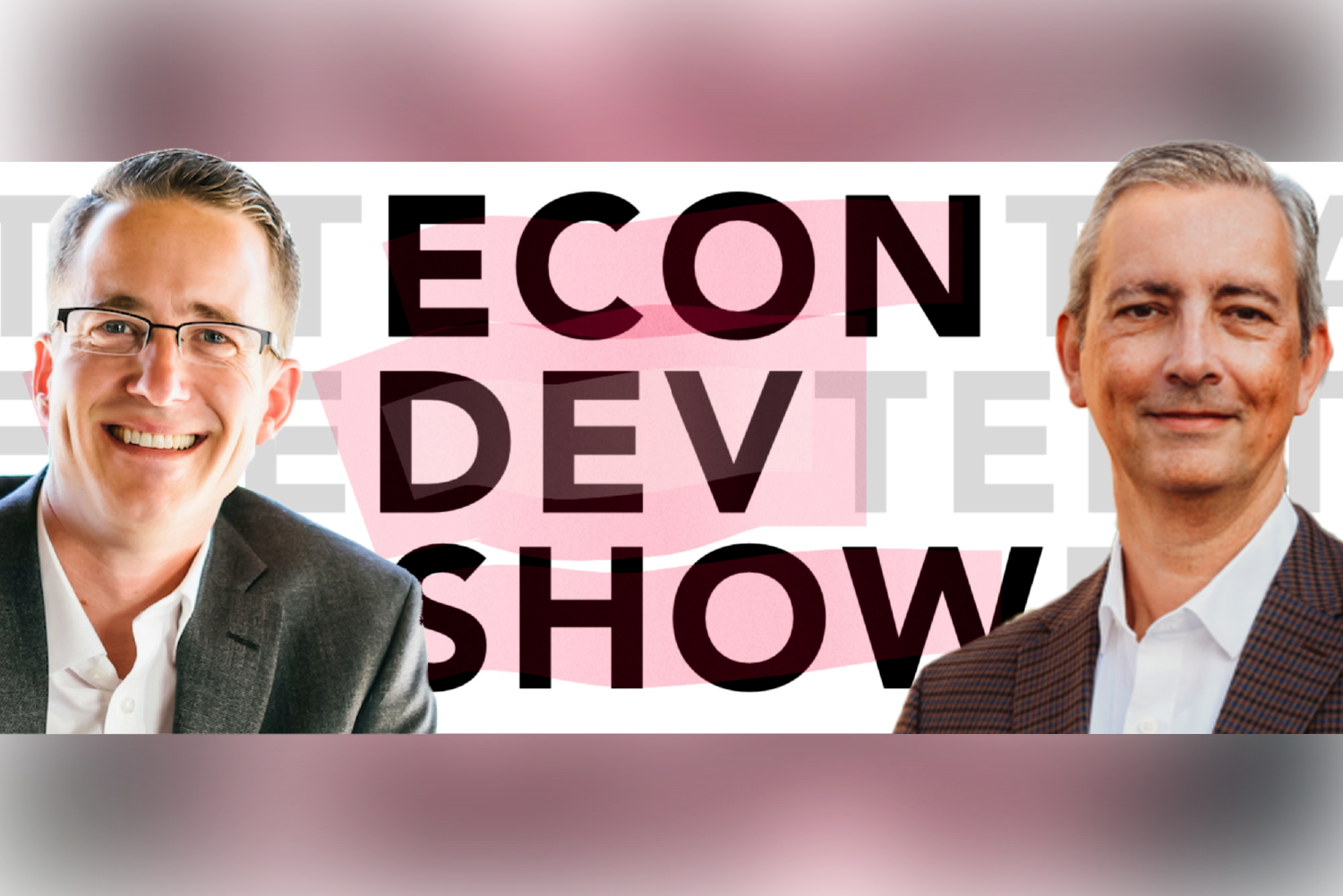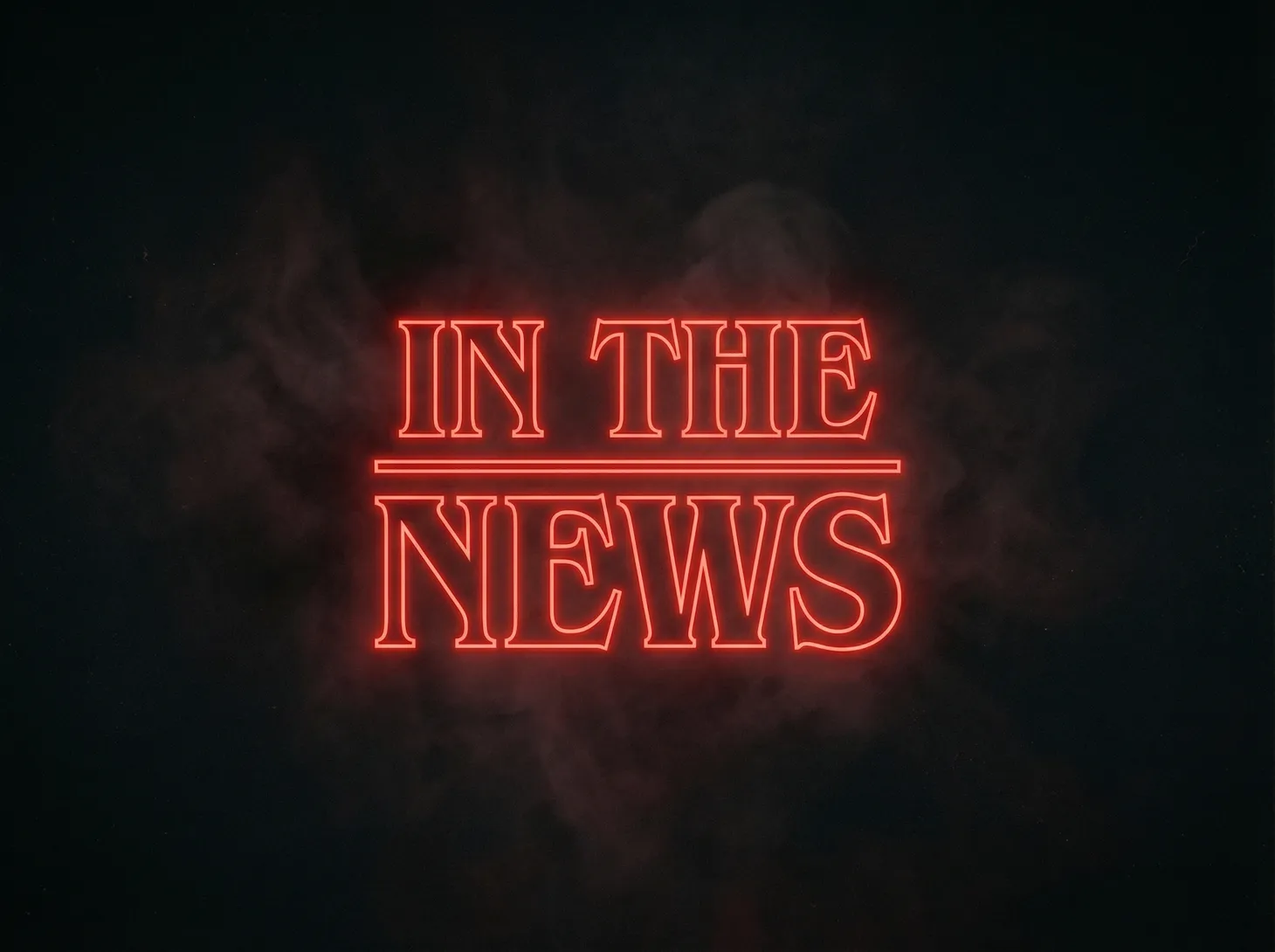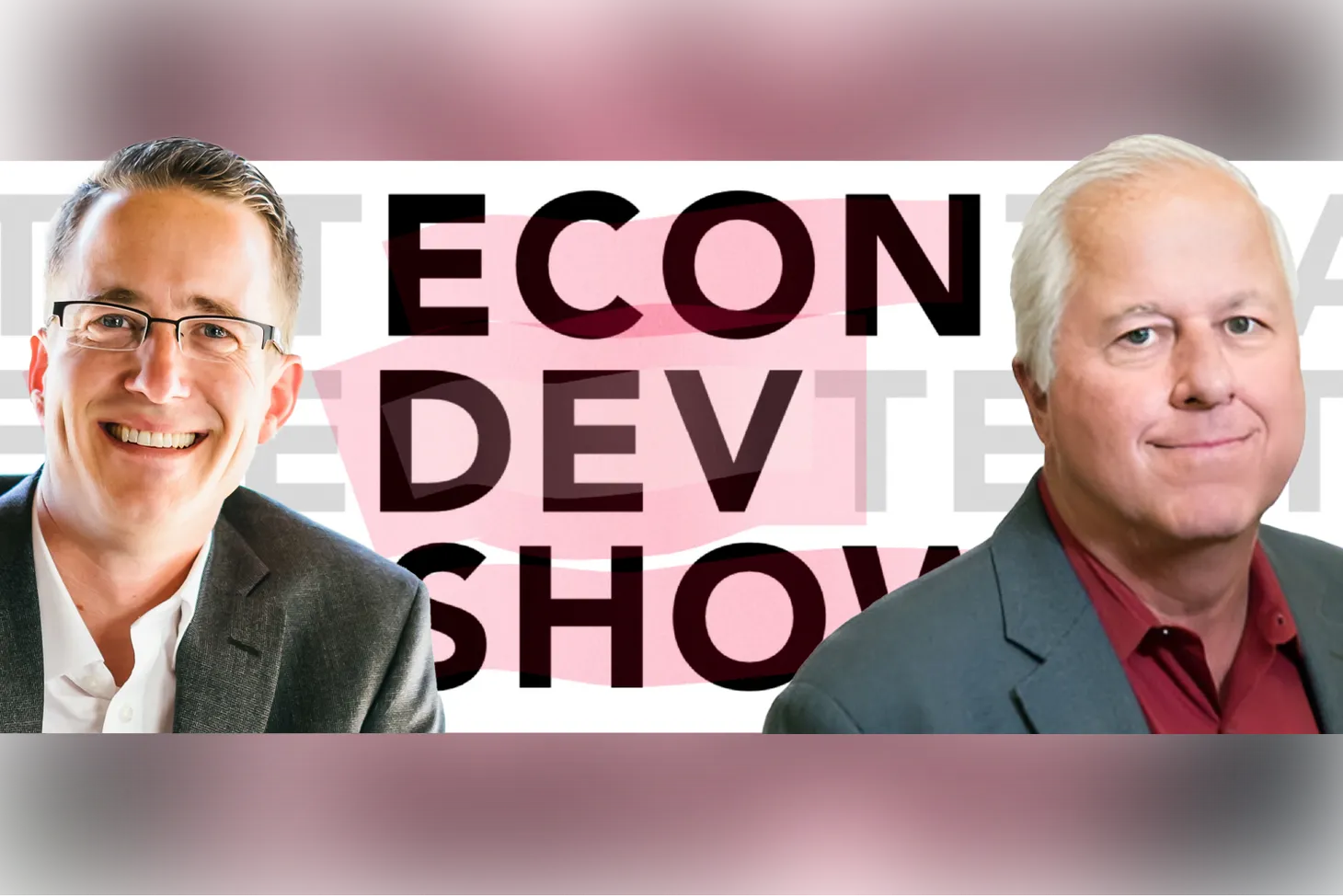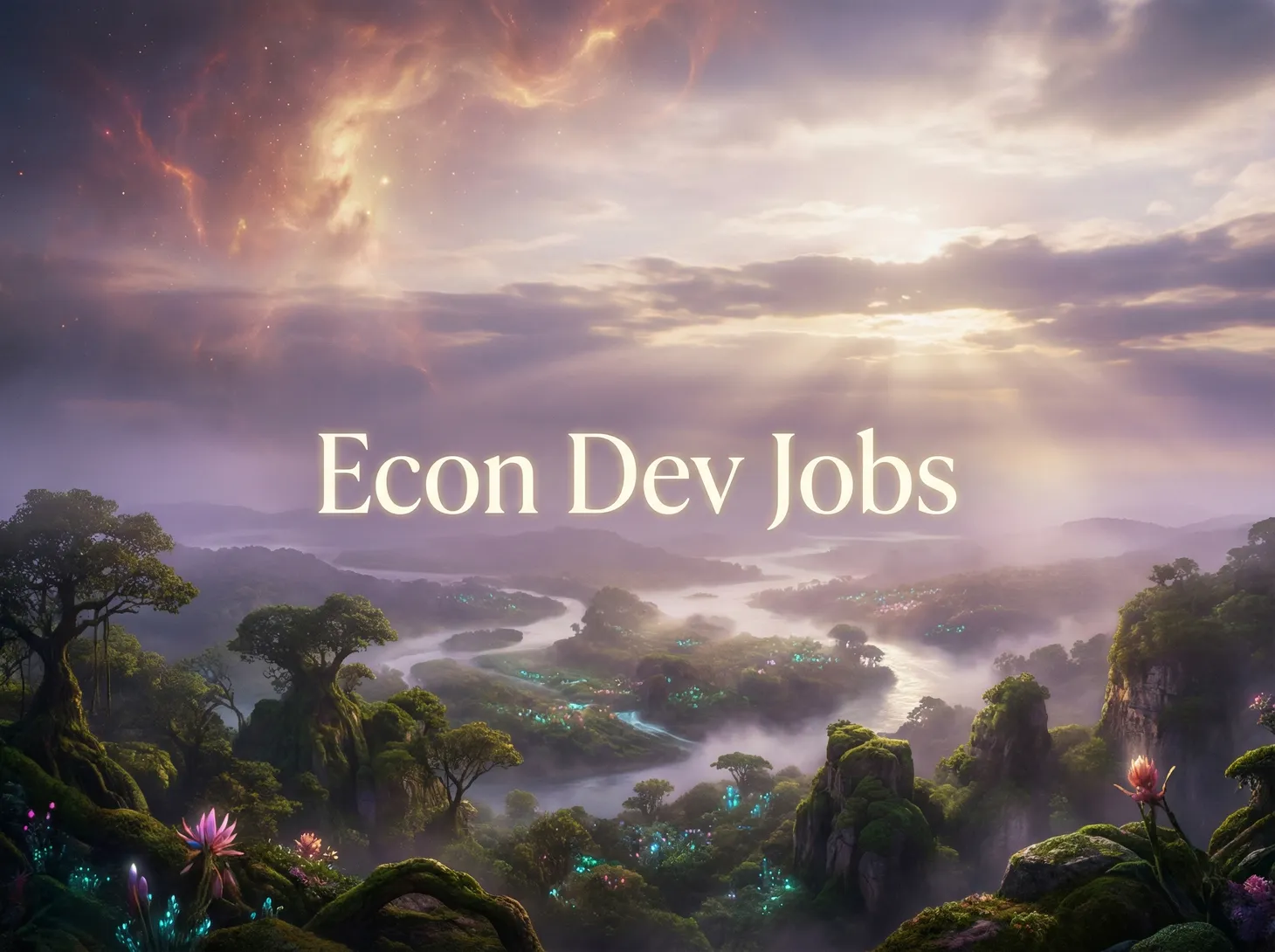Podcast 170: The Art of Downtown Transformation in Birmingham with David Fleming
Yes, They Built a Park Under an Interstate. (And No, They're Not Sorry)

Table of Contents
Episode 170 of the Econ Dev Show Podcast is out.
In this episode of the Econ Dev Show, host Dane Carlson speaks with David Fleming, president and CEO of Rev Birmingham, about transforming Birmingham from an industrial city into a thriving service economy centered around healthcare and education.
Fleming discusses how his organization fosters downtown vibrancy by preserving historic character, supporting local businesses that "make the city cool," ensuring economic and racial diversity, and collaborating with various municipal authorities to create a downtown that attracts over 30 million annual visitors while maintaining its unique identity.
🚨 "How far is this building from the airport?"
That's a real RFI question an economic developer I recently spoke with in North Carolina gets all the time.
His answer?
"I know -- but I always I have to go look it up."
He knows his sites better than anyone. But when RFIs demand specific, ever-changing data - broadband availability, utility diameters, drive times, college program stats - it turns into hours of research.
So I showed him what Sitehunt can do.
⚡ In one quick demo:
- It mapped sewer lines and power infrastructure from GIS - down to pipe material
- Pulled FCC broadband data and labor force reports
- Calculated airport drive time instantly
- Filled out a 60-question RFI in minutes
His response?
"Can I try it with one of my own sites?"
That's the moment I aim for in every demo: when the lightbulb goes off and they realize this isn't just software--it's hours of their life back.
If you've ever scrambled to fill out an RFI at the last minute, let's talk.
I'll show you what your next one could look like--with 90% of the work already done.
Actionable Takeaways for Economic Developers
- Focus on supporting local businesses that give your city a unique character and "make the city cool."
- Create incentives that help historic redevelopment while still allowing for new growth.
- Work in partnership with various city authorities (parking, transit, housing) to align development goals.
- Develop housing incentives that encourage economic diversity, not just luxury developments.
- Measure downtown success by evening vibrancy and residential activity, not just daytime business metrics.
- Recognize the importance of maintaining racial and economic diversity in downtown development plans.
- Position anchor institutions like healthcare and universities as catalysts for urban revitalization.
- Balance the needs of various stakeholders: residents, workers, and visitors.
- Create development tools that preserve local character while encouraging economic growth.
- Focus on making downtown a destination with diverse attractions that can draw millions of visitors annually.
Like this show? Please leave us a review here — even one sentence helps!
Episode Links
- REV Birmingham is creating vibrant places
- Downtown Birmingham
- David Fleming | LinkedIn
- REV Birmingham (@revbham) • Instagram
- REV Birmingham - Facebook
- REV Birmingham: Overview | LinkedIn
- Downtown Birmingham (@downtownbhm) • Instagram
- Downtown BHM - Facebook
- Downtown Birmingham: Overview | LinkedIn
- Downtowns will evolve and survive - Birmingham Business Journal
- Do Business - Downtown Birmingham
- The Death and Life of Great American Cities (50th Anniversary Edition) by Jane Jacobs
The Econ Dev Show is made possible by our Econ Dev Pro members (join now) and sponsors: Econ Dev Tools, EDOiQ, Jorgenson Pace, Resource Development Group, and SiteHunt. (Become a sponsor.)
Insights from the Show: The Art of Revival, or How Birmingham Transformed Its Downtown from Ghost Town to Vibrant Urban Core
David Fleming, president of Rev Birmingham, discusses how the former industrial city reinvented itself through strategic development, historic preservation, and community engagement.
In the early 2000s, Birmingham, Alabama's downtown resembled many post-industrial American cities: empty storefronts, vacant buildings, and sidewalks that, as locals put it, "rolled up at 5 o'clock." Today, the city center bustles with activity well into the evening, as residents walk dogs past restored historic buildings, diners fill award-winning restaurants, and cultural venues draw visitors from across the region.
Behind this transformation is Rev Birmingham, an economic development organization led by David Fleming. As president and CEO, Fleming has helped orchestrate the city's revival by balancing preservation with progress, supporting local businesses that "make the city cool," and ensuring economic diversity in a rapidly changing urban landscape.
I spoke with Fleming about Birmingham's journey from steel town to service economy, the challenges of inclusive urban development, and how other cities might learn from its example.
On Birmingham's Economic Transformation
Q: Birmingham has historically been known as an industrial city. How has its economy evolved?
Birmingham was founded as an industrial city, specifically for iron and steel production. That identity defined us for generations. But when those industries began to decline in the late 20th century, we had to reinvent ourselves.
Today, we're a service economy. The University of Alabama at Birmingham and Children's Hospital have become our economic anchors, bringing more than full employment to the south side of downtown. Healthcare and education now drive our economy in ways that would have been unimaginable when this was strictly an industrial center.
What's fascinating is how this transformation has changed the rhythm of downtown. In the '80s and '90s, downtown was strictly a 9-to-5 business district--the sidewalks literally emptied after work hours. Now, it's almost the reverse. The north side of downtown is most vibrant in the evenings, with residents in lofts walking their dogs, people dining at restaurants, and a genuine neighborhood feel that didn't exist before.
Q: What role has historic preservation played in revitalizing Birmingham?
Birmingham is blessed with extraordinary historic buildings. Our theater district rivals many major cities, with beautiful structures from the early 20th century when Birmingham was booming. We've focused on adapting these buildings for modern use rather than replacing them.
Historic preservation isn't just about aesthetics--it's economic strategy. The federal historic tax credit has been our most powerful tool for downtown development. It allows us to preserve what makes Birmingham unique while creating economically viable spaces. When you have historic buildings that tell your city's story, the worst thing you can do is tear them down. We've learned that these buildings, properly restored, become catalysts for wider revival.
On Building an Inclusive Downtown
Q: How do you ensure downtown development benefits diverse communities?
This is something we think about constantly. A vibrant downtown must be economically diverse--we don't want just luxury housing that prices out most residents. We've worked with the city to create incentives that encourage mixed-income development. The goal is a downtown where service workers can afford to live near their jobs, not just executives and professionals.
Racial diversity is equally important, especially in a city with Birmingham's civil rights history. We want downtown to be a place where everyone feels welcome and represented, from business ownership to residential patterns. This isn't just about optics--it's about creating a genuinely inclusive economy.
Q: What's the importance of supporting local businesses in your strategy?
Chain stores serve a purpose, but they don't make a city interesting or unique. We love having Starbucks downtown, but it's the local coffee shops that make Birmingham cool. The businesses that give us character--independent restaurants, boutique retailers, creative firms--these are the ones we focus on supporting.
We've developed specific programs to help local entrepreneurs get established downtown, particularly focusing on Black and minority business owners. When visitors come to Birmingham, they're not looking for the same national chains they have at home--they want to experience what makes this place special.
On Creating Vibrant Public Spaces
Q: You mentioned a new amphitheater project. How do signature developments change perceptions of downtown?
Transformational projects can completely shift how people perceive an urban area. Fifteen years ago, we created Railroad Park downtown, and alongside it came a new baseball field for our minor league team, which had relocated to the suburbs years earlier. Suddenly, 600,000 people a year were coming downtown for baseball games--many of whom hadn't visited the city center in years.
These visitors would have this revelation: "Downtown is actually cool." They'd come for a game but discover restaurants and other attractions. The Coca-Cola Amphitheater opening this summer will have the same effect--drawing people downtown who might otherwise never visit, and changing their perception of the city.
Q: How did you approach the interstate barrier that divided downtown?
Interstate highways have been notorious for dividing American downtowns, and Birmingham was no exception. When the decision was made to rebuild our downtown interstate rather than relocate or bury it, we knew we needed to mitigate its impact.
We gathered stakeholders--the convention center, art museum, performing arts center--to envision a better pedestrian experience underneath the rebuilt highway. Instead of returning to the previous design with parking lots beneath the interstate, we created a vibrant public space that connects the historic city center with the convention district.
This project became a national model for addressing the legacy of urban highways. The key was reimagining infrastructure not just as transportation but as an opportunity to create connections and public spaces.
On the Future of Downtown Birmingham
Q: What do you see as the next phase for Birmingham's downtown development?
We're focusing on strengthening the connections between downtown's distinct districts. We have a thriving innovation district, a historic theater district, a civil rights district, and more--but they need to feel like parts of a cohesive downtown experience.
Housing remains a priority. We need more residents downtown of all income levels to support businesses and create neighborhood vibrancy. And we're looking at ways to better connect downtown to surrounding neighborhoods, making it accessible to all Birmingham residents.
Q: What advice would you give to other mid-sized cities trying to revitalize their downtowns?
First, understand and embrace what makes your city unique. Don't try to be Nashville or Austin--be the best version of your own city. For Birmingham, that meant leveraging our rich history, beautiful architecture, and diverse culture.
Second, focus on creating authentic experiences. Visitors and residents alike want places that feel real, not generic. Support the local businesses and cultural institutions that give your city its character.
Finally, build partnerships across sectors. Our success has come from aligning the efforts of government, businesses, nonprofits, and residents around a shared vision. No single entity can transform a downtown alone.
As our conversation ended, Fleming offered a simple invitation to those who haven't experienced Birmingham recently: "Come visit downtown Birmingham. Experience its history, its culture, its future. And definitely come eat--we have James Beard award-winning restaurants that will surprise you." It's a fitting conclusion from a leader who knows that a city's revival is measured not just in economic statistics, but in the stories, meals, and memories created in its revitalized spaces.
Econ Dev Show Newsletter
Join the newsletter to receive the latest updates in your inbox.


